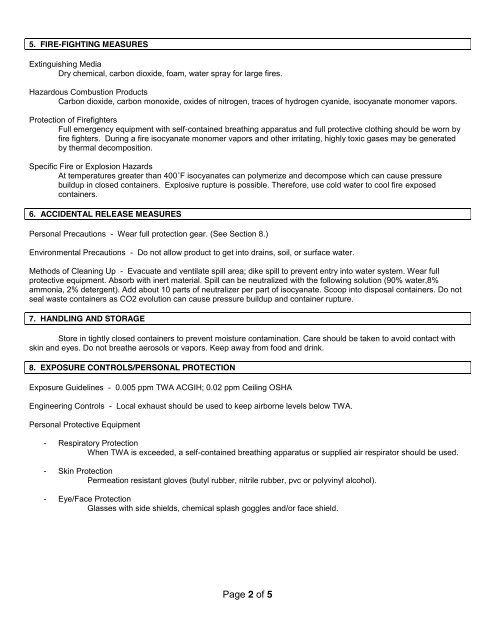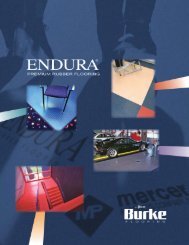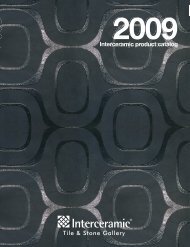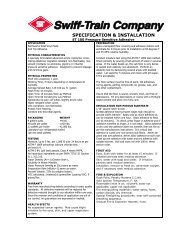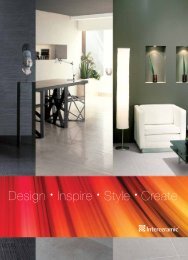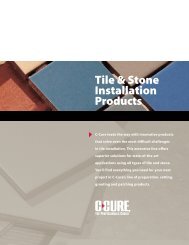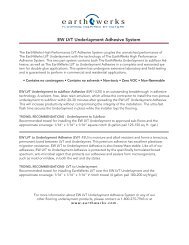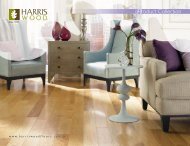1530 Specifications, Warranty & MSDS - Bolick Distributors
1530 Specifications, Warranty & MSDS - Bolick Distributors
1530 Specifications, Warranty & MSDS - Bolick Distributors
Create successful ePaper yourself
Turn your PDF publications into a flip-book with our unique Google optimized e-Paper software.
5. FIRE-FIGHTING MEASURESExtinguishing MediaDry chemical, carbon dioxide, foam, water spray for large fires.Hazardous Combustion ProductsCarbon dioxide, carbon monoxide, oxides of nitrogen, traces of hydrogen cyanide, isocyanate monomer vapors.Protection of FirefightersFull emergency equipment with self-contained breathing apparatus and full protective clothing should be worn byfire fighters. During a fire isocyanate monomer vapors and other irritating, highly toxic gases may be generatedby thermal decomposition.Specific Fire or Explosion HazardsAt temperatures greater than 400F isocyanates can polymerize and decompose which can cause pressurebuildup in closed containers. Explosive rupture is possible. Therefore, use cold water to cool fire exposedcontainers.6. ACCIDENTAL RELEASE MEASURESPersonal Precautions - Wear full protection gear. (See Section 8.)Environmental Precautions - Do not allow product to get into drains, soil, or surface water.Methods of Cleaning Up - Evacuate and ventilate spill area; dike spill to prevent entry into water system. Wear fullprotective equipment. Absorb with inert material. Spill can be neutralized with the following solution (90% water,8%ammonia, 2% detergent). Add about 10 parts of neutralizer per part of isocyanate. Scoop into disposal containers. Do notseal waste containers as CO2 evolution can cause pressure buildup and container rupture.7. HANDLING AND STORAGEStore in tightly closed containers to prevent moisture contamination. Care should be taken to avoid contact withskin and eyes. Do not breathe aerosols or vapors. Keep away from food and drink.8. EXPOSURE CONTROLS/PERSONAL PROTECTIONExposure Guidelines - 0.005 ppm TWA ACGIH; 0.02 ppm Ceiling OSHAEngineering Controls - Local exhaust should be used to keep airborne levels below TWA.Personal Protective Equipment- Respiratory ProtectionWhen TWA is exceeded, a self-contained breathing apparatus or supplied air respirator should be used.- Skin ProtectionPermeation resistant gloves (butyl rubber, nitrile rubber, pvc or polyvinyl alcohol).- Eye/Face ProtectionGlasses with side shields, chemical splash goggles and/or face shield.Page 2 of 5


